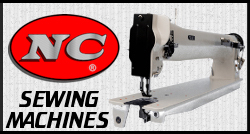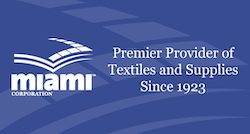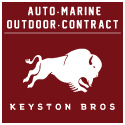-
Not auto but interesting...I suppose this work of art was not really easy to perform. I also suppose lots of patience was necessary to restitch it. The legs of the chair also look curious.
-
Show off your latest custom upholstery work.Nice job Eldar! The blue accent adds elegance and gives the last touch to the set of seats!
-
PostingHello Nadeem/Naseem, I wonder what to do in case of editing a comment (recent comment section) with a misspelling or some other mistake. Is it possible for us to correct them?
I really appreciate your assistance,
Cesar -
AutoOriginals.comI'd like to have this complete upholstery supplier in my town! Everything can be found here!
-
My ShopCongratulations master Jim and Eldar, for so nice and tidy shops. Not all the upholstery shops look like yours. Most of the shops I visited in many countries have almost a similar pattern, an old and dirty working table, a worn sewing machine, some rusty seat frames hanging on the wall or scattered on the floor, some tools and materials here and there, etc.
Perhaps this mess is understandable, because of many jobs on door. I think the best would be to hire an assistant to do maintenance and cleaning constantly. The assistant would be in charge of doing these 'minor jobs', clearing out the working area and also cleaning the vehicle where the master trimmer would work on.
And as Eldar says, there should be an additional 'dirty zone' where to park the car and do the disassembling and cleaning of the parts before taking them to the sewing and assembly area. -
Damaged vinylI agree with master Fred Mattson, those flaws also come on some leather hides which were not rolled on a tube properly. There are some upholstery suppliers who like to fold over vinyls or leather hides. That is a terrible mistake. The worst is they say do not worry, just put it under the sunrays and they would disappear. That will not happen because those creases would remain forever giving an awful look to our projects.
-
Patterning techniquesNormally, by using a pen, I first draw the required design on the cushion foam. The patterns I would get would be with the real measures I already marked on the foam. I use two ways of patterning. One is by using 'stationery cardboard' in case of '2D flat designs', but if I have to pattern '3D irregular designs' I'd rather use 'stretchy vinyl'.
In both cases to keep them steady attached to the foam I use upholstery pins or some points of yellow glue. All of the patterns should match one in front of the other and I should not forget to mark where is necessary the 'alignment marks or notches'.
Why do I use 'stretchy vinyl' as a second option?
I use it in case of rounded areas, so I could stretch a little the material and pin there to not let it move. At the time of sewing procedure, I would stretch the material a little to make the 'notches' meet one in front of the other.
After having these 'real measures molds', is time to transfer them to 'real material (vinyl, leather, fabric, etc.)' not forgetting to add the 'seam allowance' that could be no less than 1 cm or 1/2 of an inch.
If i want to preserve these mold for similar jobs, I could transfer them to a 'thicker cardboard or thin sheet of metal'.
If more sophisticated, in case of laser cutting machines, I would transfer them to a computer.
I also have used in the past, the way of attaching the material to the seat by using upholstery pins and, directly mark with a tailor chalk or waxed pencil on the material giving it the required seam allowance. This method is valid but not so precise. -
3-D pleats or wristwatch style pleatsHi David, Glad to find you on the Hog Ring Forum. Nice way of performing those 3D pleats.
-
Dying/Distressing chrome tanned leatherHello Andy, As far as I know about 'distressed leather' is a leather that looks worn and aged. It only has the 'appearance' but it never was weakened in the least.
We already know these 'appearances' are achieved in the tannery. But,if we want to do something similar, first thing to consider is the material; the ideal would be a 'furniture leather' with no 'sealer' on top. This way the procedure would be easier, so we could rub over another contrast color. Besides, if we would want to create a more antique look with spots, creases, etc. the rubbing alcohol and a thin sandpaper to rub off are useful.
After finishing the procedure add 3 coats of 'transparent sealer/lacquer' to protect your antique finish.
If you're trying out with 'automotive leather', it's not so easy, the first step would be to remove the sealer these leathers have on top. 'Rubbing alcohol' is useful by hard rubbing with a rag and cleaning with another. The issue is the original paint would come off. Perhaps, smoothly sanding off the surface to remove the lacquer would be more effective. There is an upholstery leather also called 'commercial leather' which was hard ironed/pressed in the tannery. As the 'sealer' was also pressed, thereby it's very hard to remove by using rubbing alcohol. It only can be defeated by sanding off the surface in case we want to repaint or add color spots.
I hope you find this information useful!
Cesar
Cesar Chavez

Start FollowingSend a Message








- Terms of Service
- Useful Hints and Tips
- Sign In
- Created with PlushForums
- © 2025 The Hog Ring